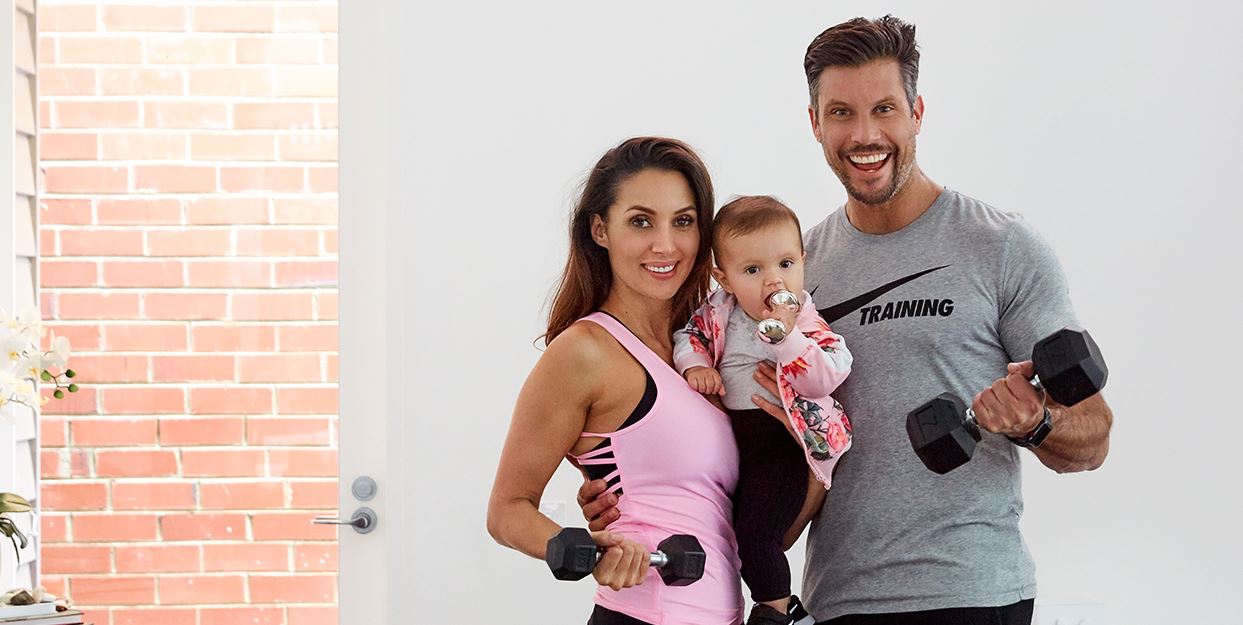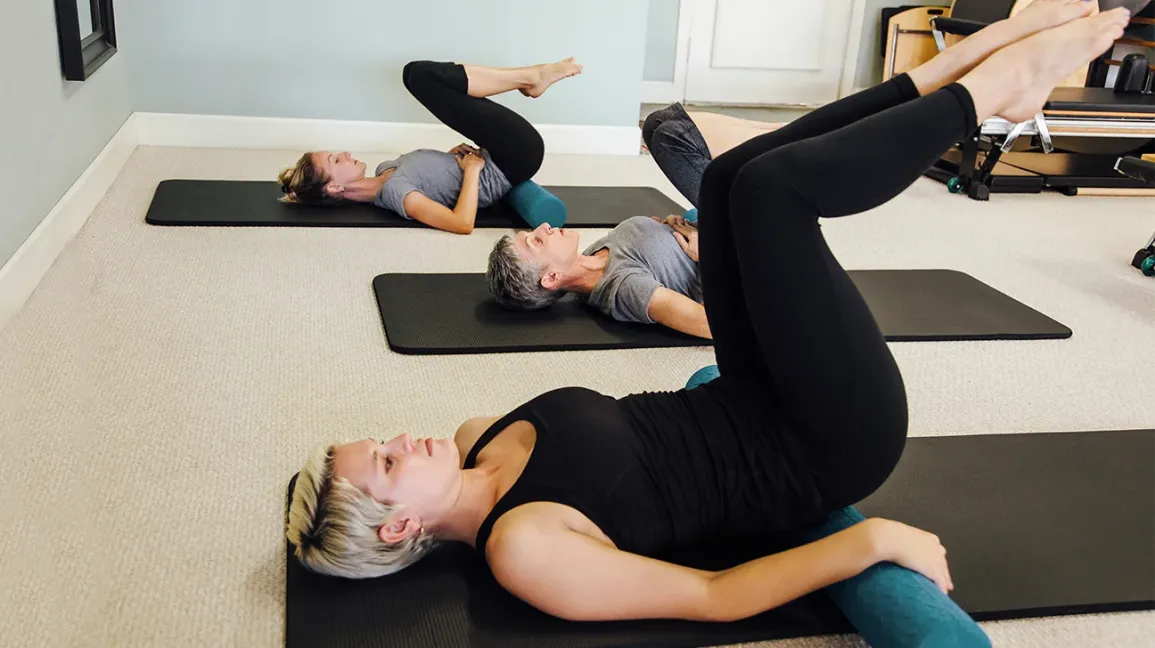Exercise Daily – Losing weight and regaining your pre-pregnancy shape after having kids can be a challenging but incredibly rewarding journey. As a parent who has been through this transformation, I understand the struggles and triumphs that come with it. In this blog, I will share my experience and valuable insights on how to shed those post-pregnancy pounds and get in the best shape of your life.
The Post-Pregnancy Challenge
The post-pregnancy period brings about a host of changes—both physical and emotional. Your body has undergone a remarkable transformation, and it’s essential to acknowledge and accept these changes as part of the journey. It’s all part of the package, from stretch marks to fluctuating hormones.
Physical Changes:
- Weight Gain: It’s natural to gain weight during pregnancy. However, shedding those extra pounds can be a challenge.
- Stretch Marks: Many women develop stretch marks on their abdomen, thighs, or breasts during pregnancy. These marks may fade but often never fully disappear.
- Loose Skin: Your skin may not immediately return to its pre-pregnancy state. Loose skin is a common concern.
Emotional Changes:
- Postpartum Blues: Many new mothers experience the “baby blues,” characterized by mood swings and feelings of sadness.
- Body Image: A shift in body image perception is common. Some women struggle with self-esteem issues related to their post-pregnancy body.
- Fatigue: Caring for a newborn can be physically and mentally exhausting, contributing to feelings of fatigue.

Setting Realistic Goals
The first step on this journey is setting realistic goals. Understand that getting in shape takes time, and quick fixes are not sustainable. Start small, and remember that progress is still progress, no matter how slow.
The Importance of Realistic Goals:
- Sustainability: Realistic goals are sustainable in the long run. They focus on gradual progress rather than quick fixes that are hard to maintain.
- Motivation: Achieving realistic milestones boosts your confidence and motivation. It provides a sense of accomplishment that encourages you to keep going.
- Health and Safety: Unrealistic goals, such as extreme diets or intense workouts, can harm your health. Realistic goals prioritize your well-being.
How to Set Realistic Goals:
- Assess Your Current State: Start by assessing where you are now. Consider factors like your current weight, fitness level, and available time for exercise.
- Consult a Professional: If possible, consult a healthcare provider or fitness expert. They can help you set goals that align with your health and fitness needs.
- Break it Down: Divide your ultimate goal into smaller, achievable milestones. For example, to lose 20 pounds, aim for 2-3 pounds per month.
Healthy Eating Habits
A balanced diet is your best friend in the quest for post-pregnancy fitness. Focus on nutrient-dense foods, and plan your meals. Portion control is key; don’t forget to indulge in the occasional treat guilt-free.
1. Embrace a Balanced Diet:
- Opt for various foods from all food groups – fruits, vegetables, lean proteins, whole grains, and dairy or dairy alternatives.
- Aim for colorful meals to ensure you get a wide range of nutrients.
2. Meal Planning:
- Plan your meals to avoid impulsive, unhealthy choices.
- Prepare a weekly meal plan and create a shopping list to ensure you have nutritious ingredients.
3. Portion Control:
- Be mindful of portion sizes. Overeating, even healthy foods, can contribute to weight gain.
- Use smaller plates and utensils to help control portions.
4. Regular Meals and Snacks:
- Don’t skip meals. Eat regular, balanced meals to maintain energy levels and prevent overeating later.
- Include healthy snacks like nuts, fruits, or yogurt between meals to curb cravings.

Regular Exercise Routine
Incorporating regular exercise into your daily routine is crucial. From brisk walks with the stroller to home workouts, there are various ways to get moving. Find activities you enjoy to make exercise a habit.
1. Start Gradually:
- If you’re new to exercise or resuming after childbirth, begin with low-impact activities like walking or gentle yoga.
- Gradually increase the intensity and duration of your workouts as your fitness level improves.
2. Choose Activities You Enjoy:
- Opt for exercises that you find enjoyable. This increases the likelihood of sticking with your routine.
- Consider activities like dancing, swimming, or group fitness classes that make working out fun.
3. Include Strength Training:
- Incorporate strength training exercises to build lean muscle mass. This helps boost metabolism and tone your body.
- Start with bodyweight exercises and progress to using weights or resistance bands.
4. Cardiovascular Workouts:
- Cardio exercises, like brisk walking, jogging, or cycling, help burn calories and improve heart health.
- Aim for at least 150 minutes of moderate-intensity cardio per week.
5. Core and Pelvic Floor Exercises:
- Focus on core-strengthening exercises to address post-pregnancy abdominal changes.
- Pelvic floor exercises (Kegels) are essential for restoring pelvic health.

Consistency is Key
Consistency is the secret sauce to success. Understand that some days will be harder than others, but don’t let that deter you. Stay motivated by setting achievable goals and tracking your progress.
Support System
Having a support system can make a world of difference. Whether it’s a friend, partner, or an online fitness community, having someone to share your journey with can provide encouragement and accountability.
Why a Support System Matters:
- Motivation and Accountability: Your support system can motivate you to stay on track with your fitness goals. Knowing that someone is counting on you can keep you committed.
- Emotional Support: Pregnancy and postpartum periods bring emotional challenges. Having someone to talk to and share your feelings with can ease stress and anxiety.
- Practical Help: Friends and family can lend a hand with childcare, allowing you to carve out time for exercise and self-care.
- Social Connection: Building relationships with other moms on a fitness journey can create a sense of belonging and camaraderie.
How to Build and Nurture Your Support System:
- Family and Friends:
- Share your fitness goals and the importance of your journey with your family and close friends.
- Ask for their support in practical ways, such as helping with childcare so you can attend workouts or classes.
- Online Communities:
- Join online forums or social media groups dedicated to post-pregnancy fitness. These communities offer a wealth of information and support.
- Fitness Buddies:
- Find a workout buddy who shares similar goals. Exercising together can make workouts more enjoyable and accountable.
Mindful Eating
Practice mindful eating by paying attention to hunger cues and eating slowly. It helps you savor your meals and prevents overeating.
Staying Hydrated
Don’t underestimate the importance of staying hydrated. Drinking enough water not only aids in weight loss but also keeps you energized throughout the day.
Self-Care and Stress Management
Taking care of your mental well-being is as crucial as your physical health. Incorporate self-care activities into your routine and learn stress management techniques to cope with the demands of parenthood.
1. Prioritize Self-Care:
- Self-care isn’t selfish; it’s necessary for your overall well-being.
- Allocate time for self-care activities you enjoy, whether reading, bathing, or practicing a hobby.
2. Create a Self-Care Routine:
- Establish a daily or weekly self-care routine. Consistency is key to recharging and managing stress effectively.
- Include activities that relax you and bring joy into your life.
3. Get Adequate Sleep:
- Ensure you’re getting enough sleep, even with the demands of parenthood.
- Nap when your baby naps, and establish a bedtime routine to improve sleep quality.
4. Practice Mindfulness and Meditation:
- Mindfulness and meditation techniques can help reduce stress and anxiety.
- Dedicate a few minutes each day to mindful breathing or meditation exercises.
5. Exercise Regularly:
- Exercise is a powerful stress reliever. Incorporate physical activity into your routine to boost mood and reduce stress hormones.

Celebrating Small Wins
Celebrate every small victory along the way. Whether it’s dropping a dress size or running an extra mile, these achievements add up and keep you motivated.
Why Celebrating Small Wins Matters:
- Boosts Motivation: Acknowledging your progress, no matter how minor, provides a sense of accomplishment that fuels your motivation to continue.
- Builds Confidence: Celebrating small wins boosts your self-esteem and confidence, helping you believe in your ability to reach your larger fitness goals.
- Maintains Positivity: Focusing on your successes creates a positive mindset, making it easier to navigate challenges and setbacks.
- Tracks Progress: Celebrating small wins lets you track your journey effectively and recognize improvement patterns.
How to Celebrate Small Wins:
- Set Clear Milestones: Break your larger fitness goals into smaller, achievable milestones. These can be weekly or monthly targets.
- Acknowledge Achievements: When you reach a milestone, take a moment to acknowledge it. It can be as simple as saying, “I did it!” or doing a happy dance.
- Reward Yourself: Treat yourself to a small reward for your achievement. It could be a favorite healthy snack, a new workout outfit, or some quality “me time.”
- Share Your Success: Share your victories with your support system, whether friends, family, or an online community. Their encouragement can amplify your celebration.
- Reflect on Progress: Reflect on your journey and how far you’ve come. Create a visual representation of your achievements, like a progress chart or a journal.
Tracking Progress
Keeping track of your progress is a powerful motivator. Use apps and tools to monitor your weight loss, workouts, and overall health journey.
1. Set Clear Goals:
- Define specific and measurable fitness goals. Clear objectives give you something to track, whether it’s weight loss, strength gain, or improved endurance.
2. Use a Fitness Journal:
- Keep a fitness journal to record your daily workouts, meals, and feelings.
- Include details like your exercises, duration, and notes about your performance or energy levels.
3. Take Measurements:
- Regularly measure key metrics such as weight, body measurements (waist, hips, arms), and body fat percentage.
- Use a tape measure or a body composition scale to track changes.
4. Photos and Visual Records:
- Take before-and-after photos to document your progress visually. Sometimes, changes are more apparent in pictures than on the scale.
5. Tracking Apps and Technology:
- Utilize fitness and health tracking apps or wearables to monitor your steps, heart rate, sleep, and nutrition.
- These tools can provide real-time data and help you set and achieve goals.

Dealing with Plateaus
It’s common to hit plateaus during your weight loss journey. When this happens, don’t get discouraged. Change your routine, try new exercises, or adjust your diet to overcome the plateau.
1. Stay Patient and Persistent:
- Plateaus are a natural part of any fitness journey. It’s essential to remain patient and continue putting in the effort.
2. Reevaluate Your Goals:
- Take a fresh look at your fitness goals. Are they still relevant, or do they need adjustment?
- Setting new goals can reignite your motivation and give you a fresh perspective.
3. Mix Up Your Workouts:
- Change your exercise routine to shock your body and break through the plateau. Try new exercises or variations to challenge different muscle groups.
- Incorporate high-intensity interval training (HIIT) or circuit training for added intensity.
4. Increase Intensity:
- Increasing the intensity is time if you’ve been doing the same workouts with weights or resistance for a while. Lift heavier weights or add more resistance.
5. Modify Your Diet:
- Reevaluate your eating habits. Are you still following a balanced diet, or have you slipped into old habits?
- Make slight adjustments to your calorie intake or macronutrient ratios if necessary.
6. Practice Mindful Eating:
- Pay attention to your eating habits. Are you eating mindlessly or emotionally?
- Practice mindful eating by savoring each bite and paying attention to hunger and fullness cues.
Seeking Professional Guidance
Don’t hesitate to seek professional guidance if you’re unsure where to start or encounter health concerns. Consulting a healthcare provider or fitness trainer can provide a tailored plan for your unique needs.
Conclusion
Embarking on a post-pregnancy fitness journey is a transformative experience. Remember that it’s about losing weight and becoming a healthier and happier version of yourself. Stay consistent, be patient, and celebrate every step of the way.
FAQs – How I Lost Weight and Got in Shape After Having Kids
Q: Is it safe to start an exercise routine right after giving birth?
It’s crucial to consult your healthcare provider before beginning any exercise regimen after childbirth. They can provide guidance based on your specific circumstances.
Q: How long does it typically take to see significant results in post-pregnancy weight loss?
The rate of weight loss varies from person to person. It’s essential to focus on progress rather than a timeline. Sustainable weight loss is often gradual.
Q: What are some effective stress management techniques for new parents?
Stress management techniques include deep breathing exercises, meditation, yoga, and seeking support from friends and family. Finding time for self-care activities is also essential.
Q: Are there specific exercises that target post-pregnancy belly fat?
While spot reduction is ineffective, core-strengthening exercises can help tone the abdominal muscles. Consult a fitness professional for tailored exercises.
Q: Can I breastfeed while on a weight loss journey?
Yes, you can breastfeed while working on your post-pregnancy fitness. Maintaining a balanced diet is important to ensure you and your baby receive proper nutrition.





